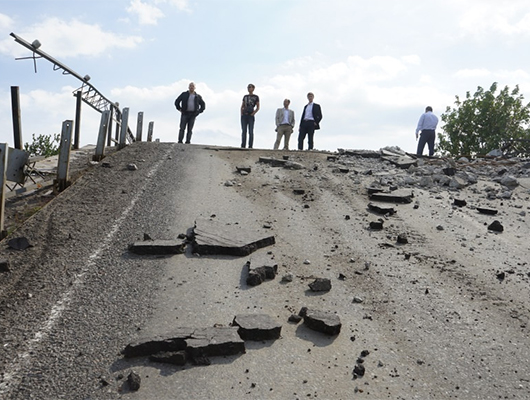Water Crisis Continues in Eastern Ukraine

Unrest in Ukraine began in the fall of 2013, when Ukraine did not sign an agreement with the European Union. Students and other young people began engaging in demonstrations and protests in the capital city, Kiev, with the objective of fighting corruption in their country. The situation became more unstable with Russian invasions of the Crimea region and violence against pro-Russian rebels in the Debaltseve region of eastern Ukraine, which continue despite ceasefire agreements. The Donetsk and Luhansk regions of eastern Ukraine were hit particularly hard by the conflicts.
Over the past two years, approximately 6,000 lives have been lost due to fighting, and a further 13,961 have been wounded. 5.2 million are currently living in conflict areas. 978,482 have been internally displaced, including 119,832 children. 600,000 Ukrainian citizens have fled to neighboring countries, with 400,000 escaping to Russia.
While many have left conflict zones, others have stayed for various reasons. They may have feared facing worse dangers if they tried to leave, wanted to protect their family or property or been physically unable to move. Those trapped in conflict zones are often forced to hide away in basements with little food and no heat or electricity. Many are also lacking one very important resource: water.
There is currently a water crisis in Eastern Ukraine that could easily become worse. 1.3 million have been affected, especially in Donetsk and Luhansk. Damaged and destroyed water lines and water shortages have caused suffering for many. In non-government controlled areas of Luhansk, citizens rely on trucks bringing supplies or must travel to neighboring villages for safe drinking water. The city of Mariupol, located in Donsetsk, is relying on a depleting water storage reservoir.
The situation has worsened over the past month due to little rainfall and hot summer temperatures. The risk of waterborne disease will increase if people are unable to properly store and transport water. It is difficult to move supplies across borders between government and non-government controlled areas, which could be due to rebel forces directly preventing the delivery of aid to certain cities. The need is more urgent than ever.
UNICEF is currently helping those in Donetsk and Luhansk access safe water and has assisted 550,000 people since January 2015. 54,000 have also received additional hygiene supplies. However, UNICEF will need to raise significant funds to continue providing these services. Another organization providing aid to Ukraine is United Helping Ukraine. This 100 percent volunteer-based group works on fundraising, raising awareness of the crisis and holding rallies in support of Ukraine’s independence. They also have been distributing food, medical supplies and other donations to families affected by the conflict.
– Jane Harkness
Sources: BBC, CNN, Harvard University, Reuters, UNICEF, United Help Ukraine, Voice of America
Photo: Flickr
